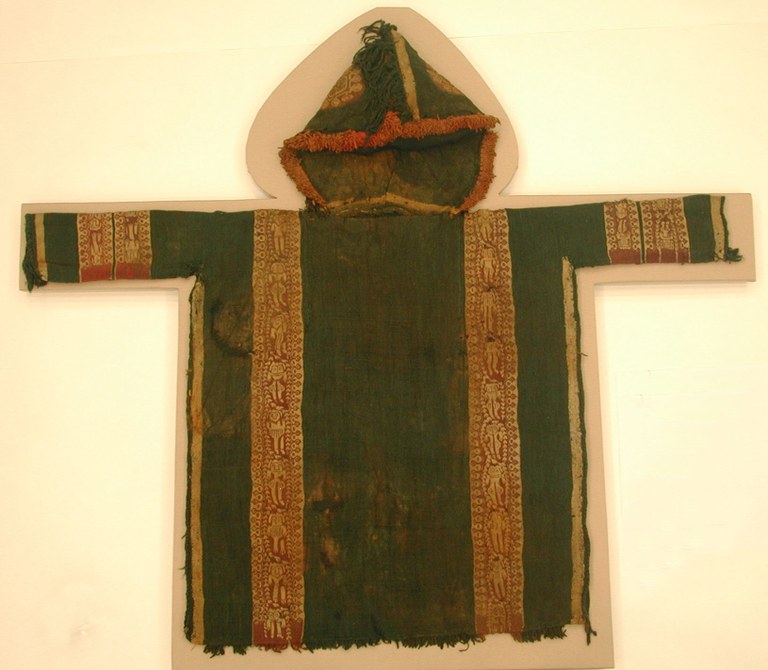Child's Tunic with Hood

Tapestry weave of dyed wools, plain (tabby) weave ground of dyed wool, fringe of dyed wools along edge of hood and lower edge of tunic, L. 101 cm; W. 89 cm. Egypt, ca. 5th–7th century CE. The Metropolitan Museum of Art, Gift of George D. Pratt, New York, 1927 (27.239).
This is a typical hooded tunic intended for a child, on which charms were placed to protect the child from the elements and unseen dangers. The medallions on the hood of the tunic, for instance, are composed of concentric circles, a motif intended to repel the evil eye among other perils.